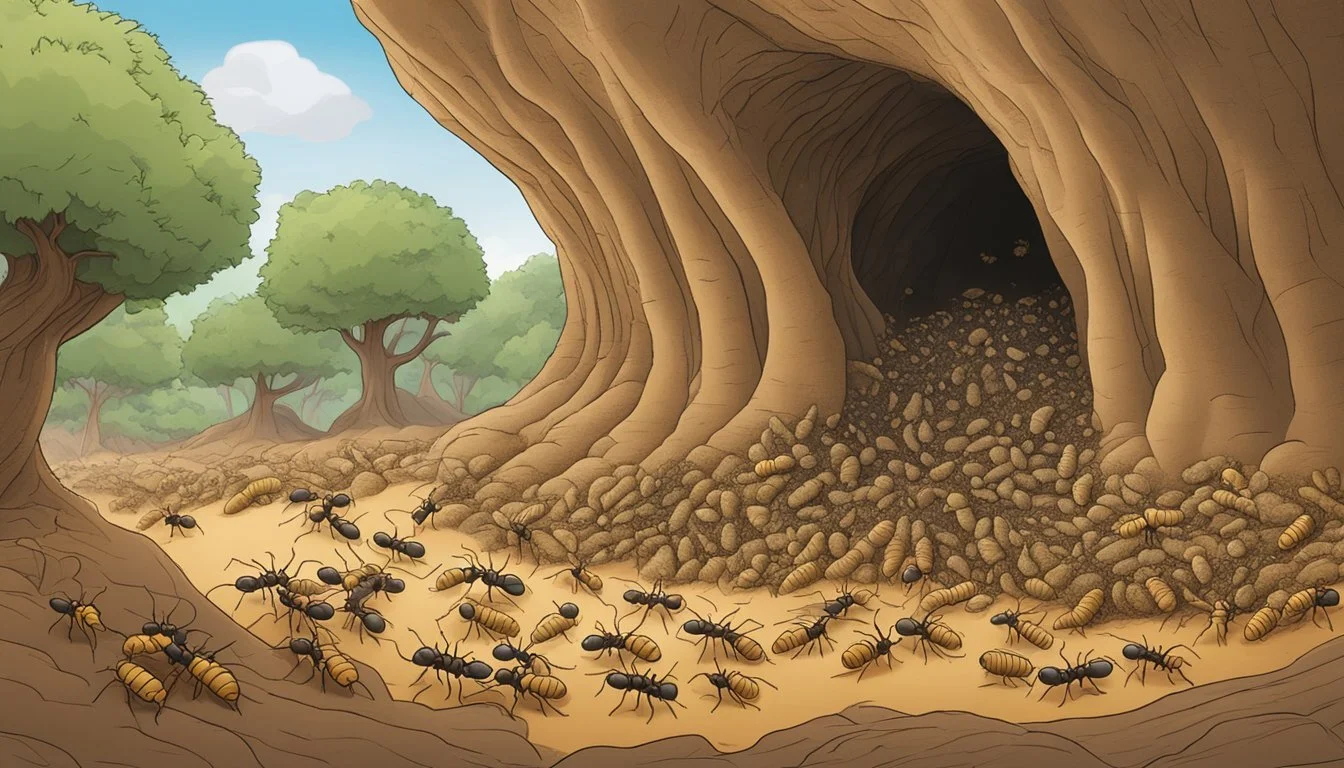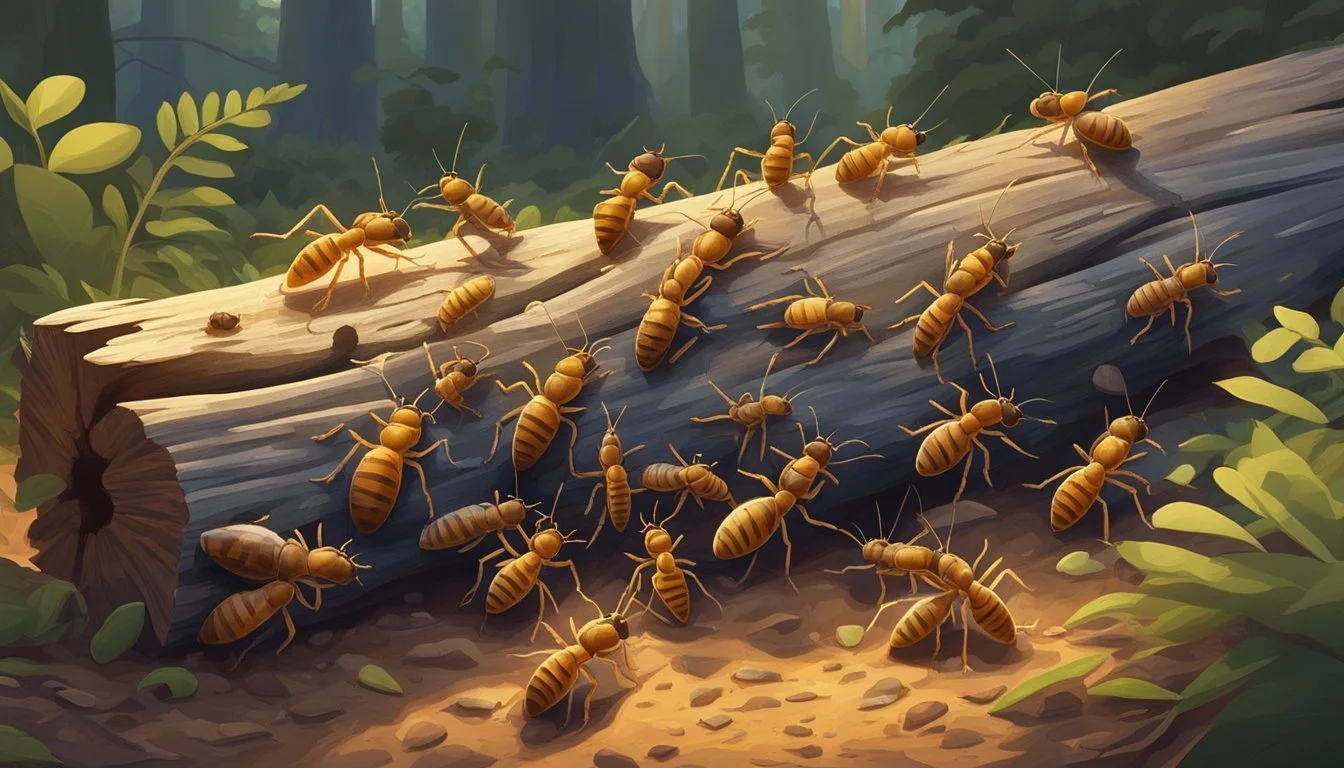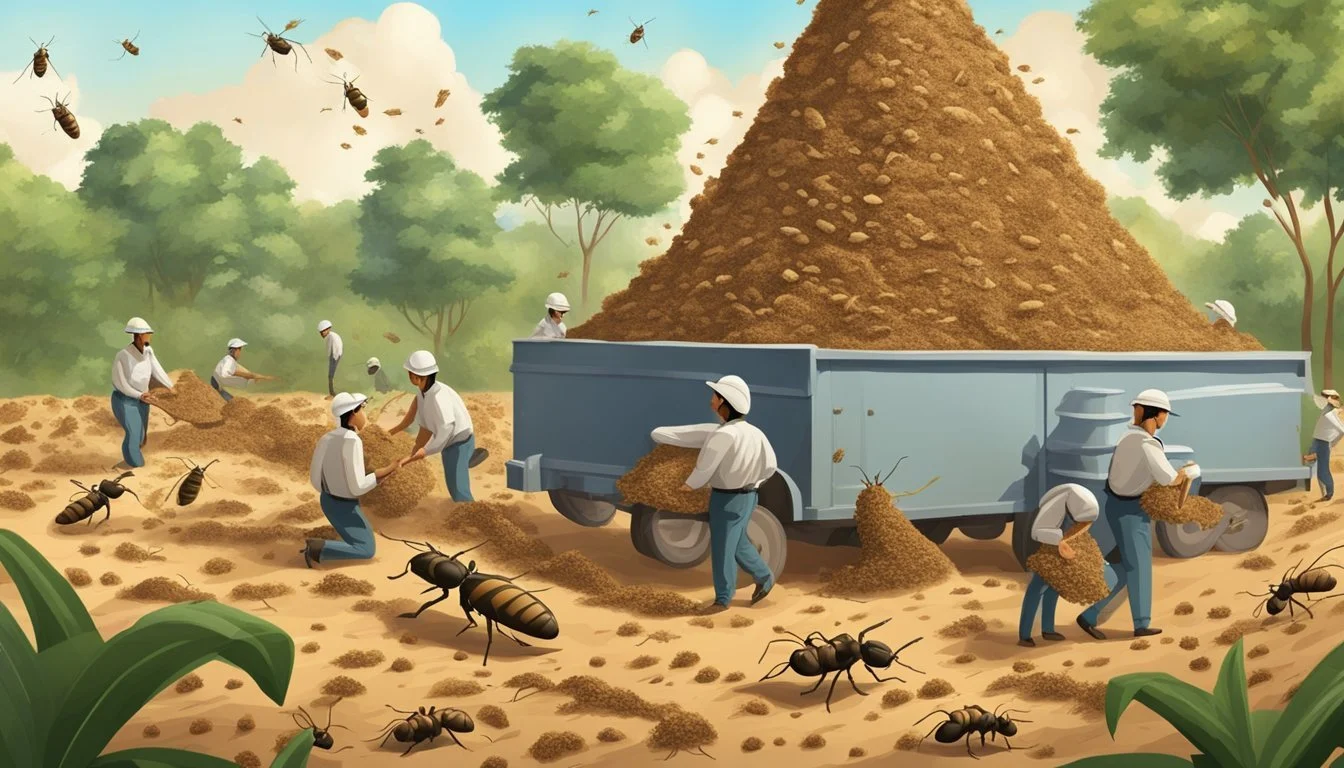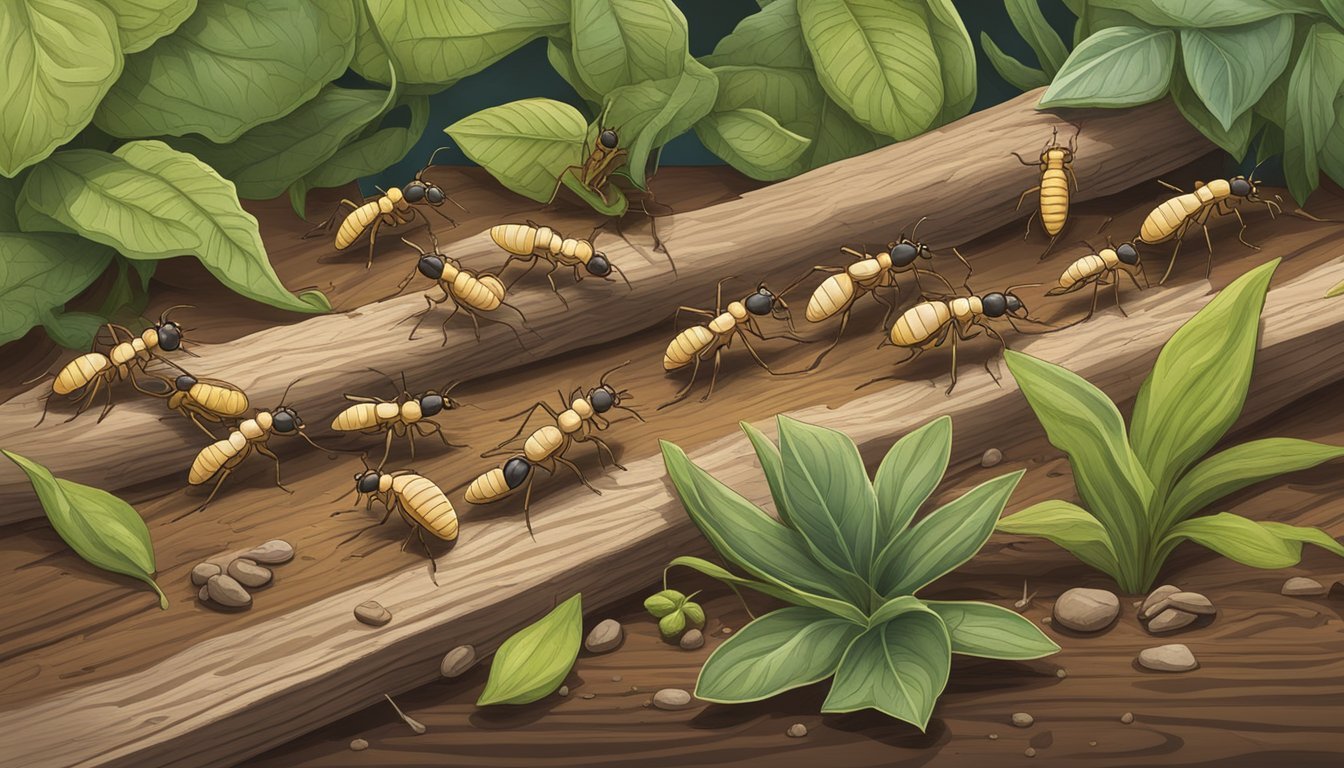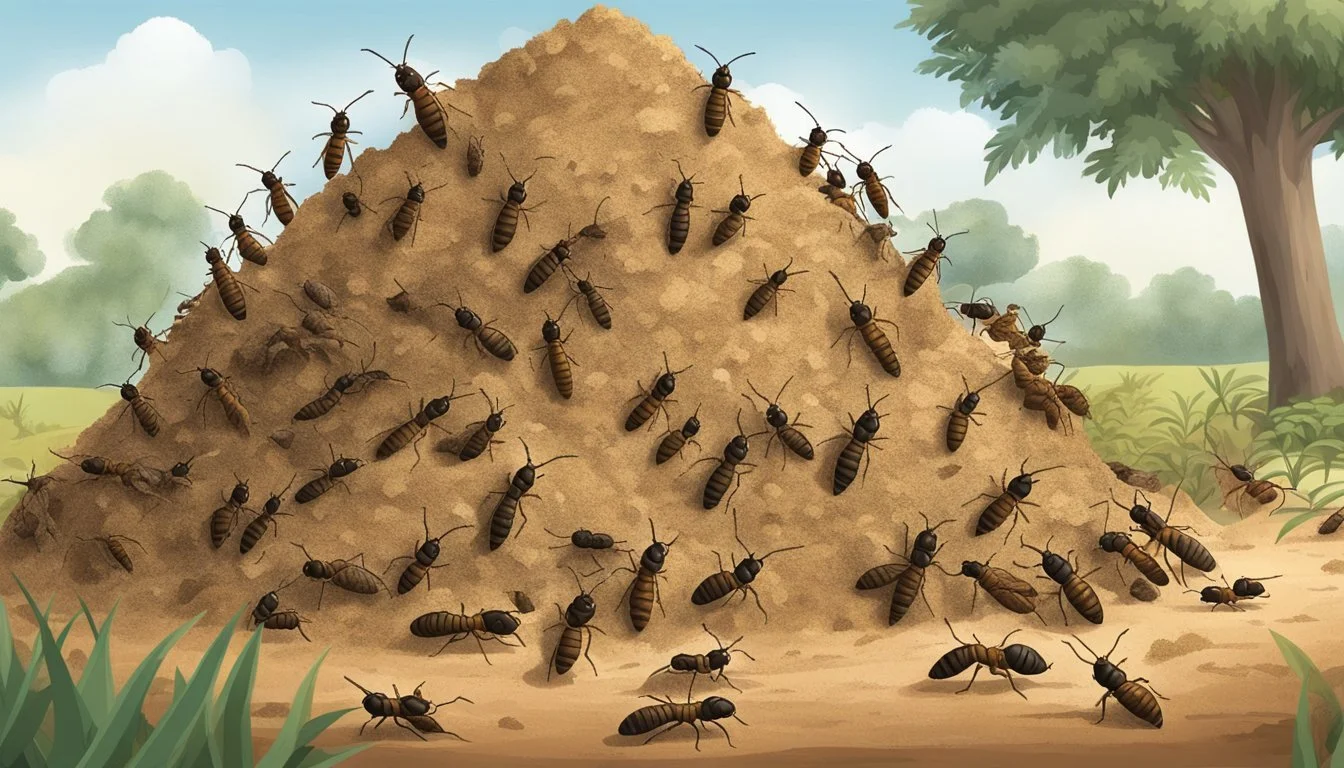Termites Sustainable Insect Protein in the Culinary World
Termites, traditionally viewed as pests, are emerging as a promising solution for global food security challenges. With the world's population rising and the demand for protein increasing, sustainable alternatives to conventional livestock are becoming imperative. Termites, rich in protein, vitamins, and minerals, offer an eco-friendly and efficient protein source. The practice of entomophagy, the consumption of insects by humans, is not a new concept. Various cultures around the globe have included termites in their diets for centuries due to their nutritional value and availability.
The sustainability of harvesting termites for human consumption lies in their lower greenhouse gas emissions and minimal land use compared to traditional livestock farming. Termites have a high feed conversion rate, meaning they require less feed to produce the same amount of protein. Additionally, termite farming could reduce deforestation and biodiversity loss associated with agricultural expansion.
Advancing global food security involves not only ensuring ample food production but also promoting dietary diversity and nutrient-rich foods. As the world explores more sustainable food sources, termites present a viable option that could complement traditional food systems and alleviate some of the pressure on the environment. While the acceptance and integration of termites into mainstream diets pose social and cultural challenges, the potential benefits make them a subject of serious consideration in the quest for sustainable and secure food sources.
Understanding Entomophagy
Entomophagy refers to the dietary practice of consuming insects, a tradition with roots in many cultures that offers a blend of environmental, nutritional, and food security benefits.
Historical Perspectives and Cultural Significance
Historically, the consumption of insects, or entomophagy, has been documented across various cultures. Aristotle wrote about harvesting tasty cicadas, and research indicates that many societies, particularly in Asia, Africa, and Latin America, have long-standing traditions of eating insects. Gene DeFoliart, an entomologist, emphasized that insects have been a part of the human diet for millennia.
Global Impact on Food Security
With the world population projected to reach 9 billion by 2050, food security is becoming a pressing issue. Insects like termites offer a substantial opportunity for improving food security, especially in regions like Sub-Saharan Africa where food resources are often scarce. Edible insects can be a remedy for food insecurity due to their availability.
Environmental Benefits
Compared to traditional livestock, the cultivation of insects for protein is associated with a lower environmental impact. They emit fewer greenhouse gases and require less land and water. Therefore, the promotion of entomophagy is aligned with goals for environmental sustainability and reducing environmental pollution.
Nutritional Value of Insects
Insects provide high-quality protein, fats, and micronutrients. Their nutrient composition includes a favorable amino acid profile, essential fatty acids, plus vital vitamins and minerals. For example, the protein content in termites ranges from 32% to 38%, making them a nutritious food source with a complete nutrient composition.
Consumer Attitudes and Neophobia
Consumer acceptance varies by region and culture, with neophobia—the fear of trying new foods—playing a significant role in Western attitudes. Studies on Belgian consumers, for instance, have highlighted both interest in sustainable foodways and hesitancy regarding eating insects. Western consumers often exhibit food neophobia, challenging the adoption of entomophagy in these regions.
Termite-Based Nutrition
This section delves into the specific nutrients that termites provide, exploring the potential health benefits and the culinary value they offer as a sustainable source of protein.
Nutritional Composition of Termites
Termites are a rich source of proteins, essential fatty acids, vitamins, and minerals. The exact nutritional content can vary, but generally termites are composed of approximately 32-38% protein and 44-49% fat by dry weight. This insect protein is an excellent alternative to traditional animal proteins, offering a sustainable production advantage. Among the fatty acids present, termites contain important polyunsaturated varieties such as omega-3 and omega-6.
Health Implications
The consumption of termites can offer various health benefits. Their nutritional composition is linked with potential to aid in reducing the risk of malnutrition and combating micronutrient deficiencies due to their content of essential amino acids and micronutrients. However, as with any food item, certain risks must be considered, including potential food safety issues such as microbial safety. Proper harvesting and processing can mitigate these risks. Current research also investigates the long-term health effects, including any potential relationship between insect consumption and diseases like cancer.
Culinary Potential of Termites
Termites have been incorporated into diets across multiple continents, signifying their vast culinary potential. In terms of insects as human food, termites are versatile. They can be roasted or fried, contributing a pleasant, nutty flavor to various dishes. Some regions create insect-infused dishes such as muffins and crackers. The emergence of insect cookbooks and a growing interest in alternative protein sources have facilitated the acceptance and use of termites in cooking, signaling the role termites may play in global food sustainability.
Insect Protein Processing
Transforming termites and other edible insects into a viable protein source entails a complex process, from farming to final product development. This processing journey ensures the sustainability of the protein while maximizing its nutritional profile.
Harvesting and Farming Techniques
Insect farming for protein, known as entomoculture, is gaining attention for its sustainability and high protein yield. Termites, along with bees, flies, and mealworm larvae, are predominantly used. Effective insect farming practices include controlled animal feed to optimize growth and protein content. Harvesting techniques are adapted to the lifecycle of the insects, with an emphasis on minimizing harm and stress to maintain protein quality.
Processing and Preservation Methods
Once harvested, the processing of edible insects involves several steps. Initial processing includes drying and heat treatment to ensure preservation and safety. Advanced methods like cold atmospheric pressure plasma processing have been researched to extend shelf life and enhance safety. Insect processing aims at creating a product that retains nutritional integrity through these preservation techniques.
Development of Insect-Based Ingredients
The processed insects are then converted into market-ready formats, such as insect flour, protein extract, or protein fractions. Research has helped refine methods to extract high-quality protein content, resulting in products like powders or hydrolysates used in a variety of food items. The development of insect-based ingredients is a critical step in incorporating this sustainable protein into the food chain effectively.
Market and Industry Insights
This section delves into the dynamic market landscape of edible termites within the insect protein industry, exploring current consumption trends, industry challenges, and projections for the future.
Current Trends in Insect Consumption
The consumption of insects, also known as entomophagy, is gaining traction as a sustainable foodway. Consumers are increasingly open to insect-based foods due to their high protein content, and termites are emerging as viable alternatives to conventional meat. This shift is evident in the burgeoning number of startups and the spike in scientific research focused on processed insects as food. The insect industry for human consumption is expanding, driven by a heightened awareness of global warming and greenhouse gas emissions associated with traditional livestock.
Challenges in Insect Industry
Despite growth, the insect industry faces hurdles, particularly in consumer acceptance. Western societies often associate insects with negative connotations, influencing the industry to target them more as animal feed than for direct human consumption. Production efficiency is also a challenge, with industry players seeking innovations to scale up and reduce costs while maintaining product quality. Regulatory hurdles further complicate market expansion, constraining the entry of processed insect products.
Future Outlook
Sustainable development and feeding a growing population necessitate alternative proteins like termites. Anticipating substantial increases in demand, the industry's future outlook remains positive, with estimates suggesting significant market growth in the coming years. Advancements in production techniques aim to minimize the industry's environmental footprint, supporting efforts against global warming. If current trends persist, the role of insects, specifically termites, in sustainable foodways and human development will be integral, offering an eco-friendly solution to the planet's protein requirements.
Policy and Regulatory Environment
Incorporating termites into food systems necessitates stringent regulatory oversight to ensure food safety, while also acknowledging their role in sustainable production and meeting nutritional needs.
Food Safety Regulations
Food safety is paramount when introducing new food products like termites. Regulatory bodies globally focus on hygiene, microbial safety, and consumer protection. For instance, the European Food Safety Authority (EFSA) provides scientific advice and communicates on existing and emerging risks associated with the food chain. In the context of edible insects, this may involve:
Assessing the risks of microbiological contamination.
Ensuring the establishment of critical control points in the production process.
Sustainability and Environmental Policies
Environmental sustainability is at the heart of policy-making for alternative protein sources like termites. Government policies often encourage:
Environmentally friendly practices that reduce greenhouse gas emissions.
Sustainable production methods that limit land and water use.
Sustainable Development Goals (SDGs) adopted by the United Nations may intersect with national policies to support the use of insect protein to alleviate the stress on conventional meat production systems.
Advocacy and Educational Initiatives
Educational initiatives and advocacy are crucial in shaping the regulatory environment. They play a key role in:
Informing the public about the benefits of edible insects, addressing nutritional and sustainability aspects.
Guiding policymakers in formulating regulations that foster sustainable food systems.
Stakeholders, including non-governmental organizations, aim to bring insects such as termites to the forefront of the dialogue on addressing human development and the saturation of current food systems.
Conclusion
Termites have emerged as a substantial alternative protein source amongst edible insects, contributing to environmental sustainability and global food security. These insects offer a notable protein content, providing a viable supplement to traditional meat consumption. Increased interest in termite cultivation underscores the shift toward environmentally friendly protein alternatives, reflecting the urgent need for sustainable food practices.
Consumer acceptance remains a critical factor in integrating termites into mainstream diets. Societal norms and cultural biases often challenge the adoption of insect proteins, despite the ecological benefits. However, as awareness grows, attitudes are evolving, leading to a gradual increase in the acceptance of termites as food.
Comparative to other livestock, termite farming has a lower environmental footprint, requiring less land and water. This advantage is crucial in a world with finite resources and a growing population. Termites provide a sustainable solution to feed future generations, aligning with efforts to mitigate the impacts of climate change.
In summary, the utilization of termites as an alternative protein source is a step forward in the search for sustainable dietary supplements. The potential impact on easing the strain of meat consumption and promoting food security is significant. As research continues and culinary applications advance, termites are poised to become an integral component of future food systems.
References
In the study of edible insects, termites offer a sustainable alternative to traditional protein sources. Notably, termites are recognized for their high protein content. Below is a list of references that explore the various aspects of termites as a sustainable food source.
Costa-Neto, E. M., & Dunkel, F. V. (2016). Entomophagy and Sustainability. Highlighting the historical context of human entomophagy and its relevance to modern sustainability challenges.
Mlcek, J., et al. (2014). Comparative Study on the Nutritional Value of Edible Insects. This study compares the protein value of insects to meat and poultry products, with specific reference to termites' protein content.
Rumpold, B. K., & Schlüter, O. K. (2013a). Nutritional Composition and Safety Aspects of Edible Insects. This work examines the protein concentrations in insects, especially Orthoptera, to which termites belong, and discusses their digestibility.
Van Huis, A. (2016). Potential of Insects as Food and Feed in assuring Food Security. This publication investigates the digestibility of insect proteins, focusing on the impact of the exoskeleton and considers termites as a nutritious food source.
Gravel, A., & Doyen, A. (Year not provided). Full Lifecycle Processing of Food Proteins from Insects. Outlines a standardised process for food protein extraction from insects, starting from insect farming to the final drying stage, relevant to termites' processing.
Each reference contributes to understanding termites' value in the human diet and their role in a circular, sustainable food system.


